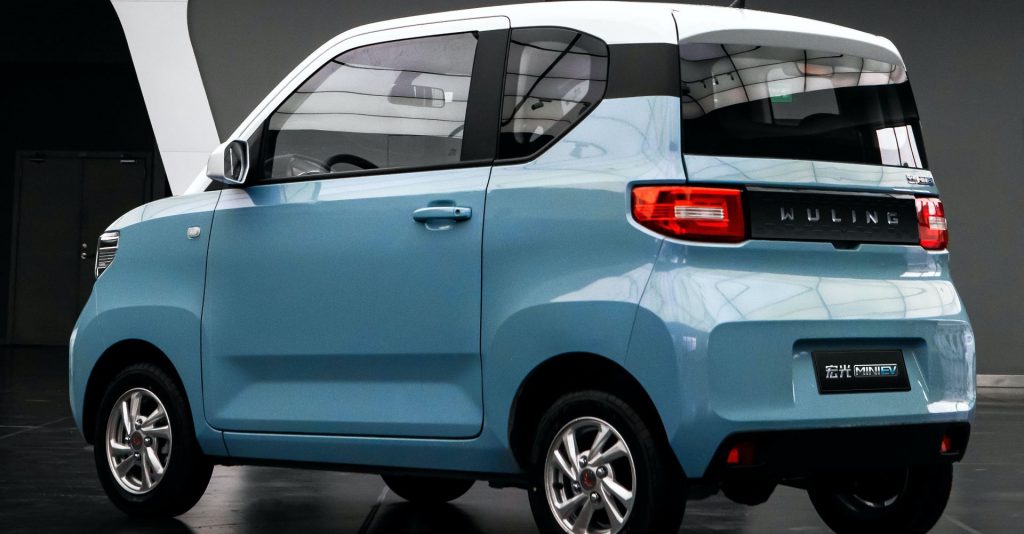Lithium Iron Phosphate Batteries – The Next Big Thing for Electric Vehicles

Wuling Hongguang Mini
By Alf Stewart
Lithium Iron Phosphate (LFP) batteries have been around for years but have always played a minor role in Electric Vehicle (EV) development. Until now. BYD Co. Ltd., China’s fourth largest battery manufacturer and Contemporary Amperex Technology Co. Limited (CATL), China’s largest battery manufacturer, are proving that a new packaging of this battery chemistry holds a lot of advantages for EVs and may prove to be a game changer for Electric Vehicle adoption.
The Old LFP Paradigm

LFP batteries are less energy dense than other lithium-ion chemistries such as Nickel-Cobalt-Manganese (NCM) and Nickel-Cobalt-Aluminum (NCA). Consequently, LFP batteries are heavier and yield less range per unit of weight. They were relegated to low end applications such as urban taxis in China.
Yet LFP batteries have significant advantages. It has much cheaper and more abundant inputs -mostly lithium, iron, and phosphate. It could, if widely adopted in EVs, prevent a materials input crunch that has widely been feared if Nickel-Cobalt chemistries prevail.
It is proven technology and is much more thermally stable – no battery fires. They have a much longer cycle life; typically, 5,000 cycles compared to 1,000 to 2,000 for other chemistries.
Despite these advantages, I had no desire to own an EV with an LFP battery due to the perception that this was an inferior technology. And then Tesla announced it would use LFP batteries for its Model 3 car in China, with batteries made by CATL. Also, I saw a road test of the Chinese Model 3 compared to the American Model 3 with the conclusion that the Chinese one was better.
Then BYD announced a new generation of LFP batteries called Blade batteries to much fanfare and significant performance claims for vehicles it is introducing with these batteries.
Cost of a Toyota Corolla-sized EV about US $20,000; 0-100 km/hr under 5 seconds; recharge in 10 minutes and a 1,000,000-mile life for the battery
The New LFP Paradigm

Higher voltage LFP batteries are the key to the enhanced performance and cost. These higher voltage batteries can handle much more electricity in charging within a short period of time.
Designing the battery modules to minimize space and materials can mitigate some of LFP’s battery density disadvantage.
Also, one is expected to routinely charge these batteries to 100% capacity, whereas Tesla recommends its NCA batteries be routinely charged to 80% and occasionally to 100% for longer road trips. A 100% charged Tesla Model 3 with LFP batteries has the same range as an 80% charged Tesla Model 3 using NCA chemistry.

At the present time, the most popular EV in China – the Wuling Hongguang Mini – is using LFP and retails for US$5,000. This vehicle is a small urban run-about which has become popular through clever marketing, but it underlines how inexpensive a car can be using LFP.
It may be time to consider a Tesla with LFP as a desirable vehicle, and Tesla is exporting Chinese Model 3’s to Europe and Canada with these batteries. This may change the perception of LFP over time, and significantly lower the cost of purchasing an EV.
It is anticipated that Chinese car manufacturers will begin selling low cost LFP battery EVs in Europe and other markets. Toyota has a deal with BYD to use its batteries in a Toyota EV. Will this use LFP chemistry? I would guess that is the plan.
Perhaps it is time that the established Lithium-Ion chemistry is challenged by new LFP technology, or possibly sodium-ion chemistry but that is another story.
